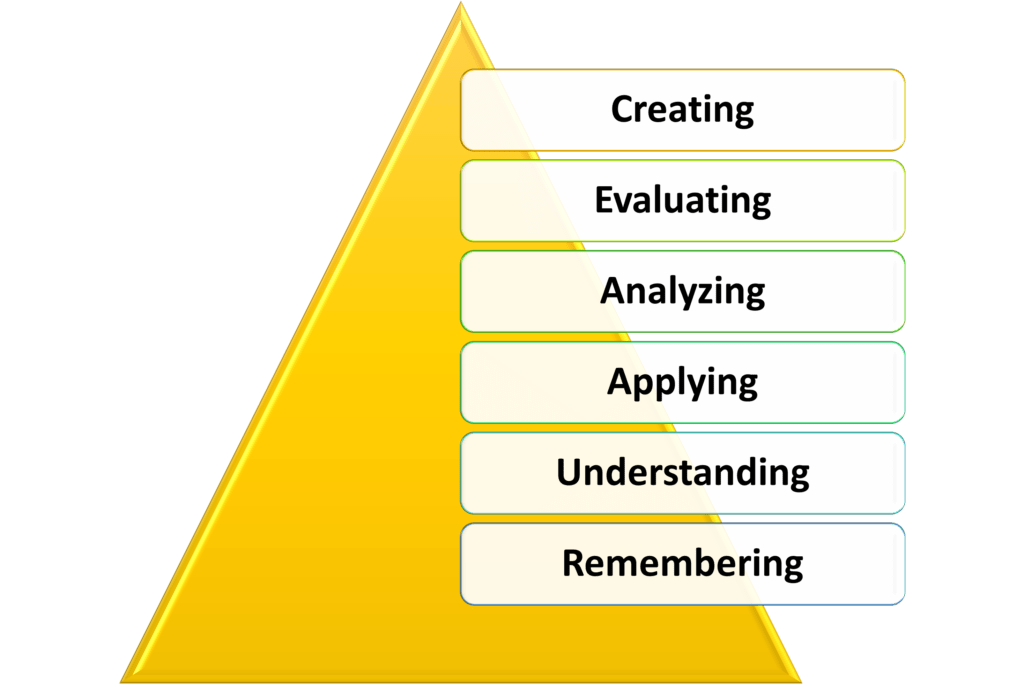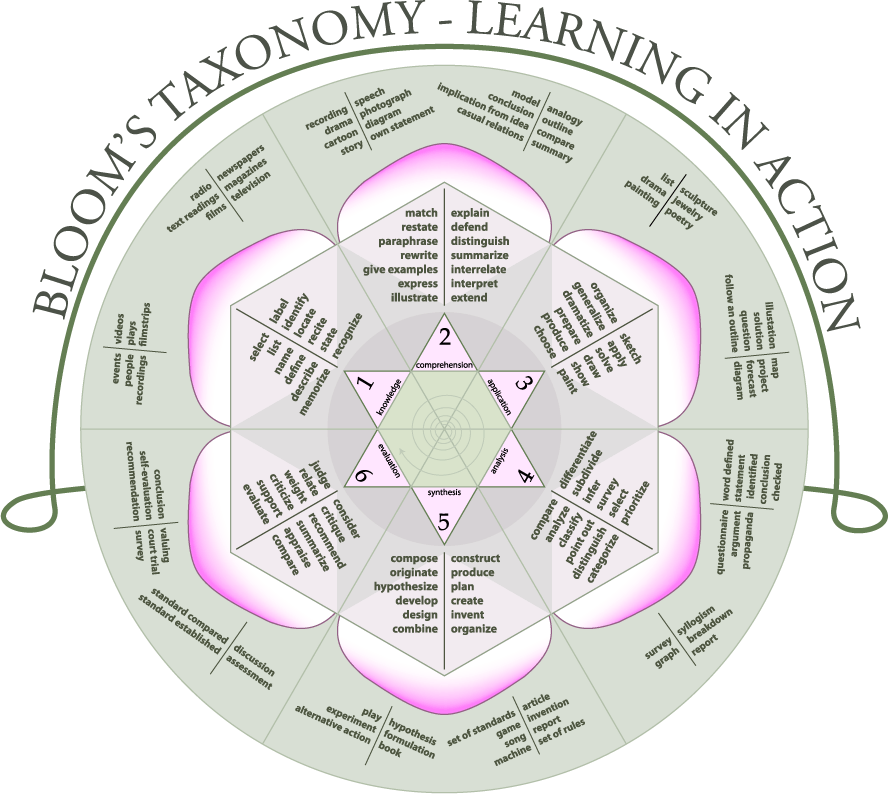Bloom’s Taxonomy is a framework that helps educators and trainers to identify and define different levels of learning objectives. Developed by Benjamin Bloom in 1956, this taxonomy has become a widely recognized and used tool in education, training, and assessment. The framework is designed to help instructors organize their teaching strategies and assess student learning outcomes effectively.
In this comprehensive guide, we’ll explore the key principles of Bloom’s Taxonomy, how it works, and how it can be used in different contexts. We’ll also discuss how you can apply the taxonomy in your teaching and assessment practices, and how can Bloom’s Taxonomy help you improve student learning outcomes. This is our comprehensive coverage of 13 Learning Models. So if you are an L&D Manager or an Instructional Designer, read on and share your insights here.
What is Bloom’s Taxonomy?
Bloom’s Taxonomy is a framework for organizing and categorizing different types of learning objectives. The taxonomy is organized into six levels, which are arranged in order of increasing complexity and difficulty. These levels include: remembering, understanding, applying, analyzing, evaluating, and creating. Each level of the taxonomy is associated with a set of specific verbs that can be used to define learning objectives.
The Six Levels of Bloom’s Taxonomy

The first level of Bloom’s Taxonomy is Remembering. This level is focused on recalling information or ideas from memory. Examples of learning objectives at this level include: memorizing facts, identifying key concepts, or reciting information.
The second level is Understanding. This level involves comprehending the meaning of information or ideas. Learning objectives at this level might include: explaining concepts in your own words, interpreting data or information, or summarizing key points.
The third level is Applying. This level involves using information or ideas in new or different contexts. Examples of learning objectives at this level include: solving problems, applying concepts to new situations, or using the information to complete a task.
The fourth level is Analyzing. This level involves breaking down information or ideas into smaller parts and examining them in detail. Learning objectives at this level might include: comparing and contrasting ideas, identifying patterns or relationships, or analyzing data.
The fifth level is Evaluating. This level involves making judgments about the value or quality of information or ideas. Examples of learning objectives at this level include: evaluating the reliability of information sources, critiquing arguments or claims, or assessing the effectiveness of strategies.
The sixth and final level is Creating. This level involves generating new ideas or solutions based on existing information or ideas. Learning objectives at this level might include: designing a new product, developing a new theory, or creating a new work of art.
Why is Bloom’s Taxonomy important?
Bloom’s Taxonomy is important because it provides a framework for instructors to design effective teaching strategies and assess student learning outcomes. By identifying different levels of learning objectives, instructors can develop activities and assessments that target specific levels of learning. This can help to ensure that students are learning at an appropriate level and that they are developing a deep and meaningful understanding of the subject matter.
In addition, Bloom’s Taxonomy can help to promote higher-order thinking skills. By encouraging students to analyze, evaluate, and create, instructors can help students to develop critical thinking, problem-solving, and creative thinking skills. These skills are essential for success in today’s rapidly changing world.
How can Bloom’s Taxonomy be applied in the classroom?
There are many ways that Bloom’s Taxonomy can be applied in the classroom. One approach is to design activities and assessments that target specific levels of the taxonomy. For example, an instructor might design an activity that requires students to apply a concept they have learned in a new context or an assessment that requires students to analyze a piece of data.
Another approach is to use Bloom’s Taxonomy as a tool for lesson planning. By identifying specific learning objectives at each level of the taxonomy, instructors can ensure that their lessons are appropriately challenging and that students are developing a deep understanding of the subject matter. This can help to improve student engagement, motivation, and achievement.
Bloom’s Taxonomy can also be used to differentiate instruction for students with different learning needs. For example, an instructor might provide additional support for students who are struggling to remember key facts or challenge advanced students to analyze and evaluate complex ideas.
Applying Bloom’s Taxonomy to Assessment Bloom’s Taxonomy can be a valuable tool for designing effective assessments. By targeting different levels of the taxonomy, instructors can create assessments that assess a wide range of learning objectives.
For example, a multiple-choice test might assess only lower-level objectives, such as remembering or understanding. In contrast, a project-based assessment might assess higher-level objectives, such as analyzing, evaluating, or creating.
When designing assessments, it’s important to ensure that the assessment matches the learning objectives and that the assessment is aligned with the instructional goals. This can help ensure that the assessment accurately reflects what students have learned and provides a meaningful measure of student achievement.
What are the 3 domains of objectives for Blooms Taxonomy

Bloom’s Taxonomy is a framework for categorizing learning objectives that were developed by educational psychologist Benjamin Bloom and his colleagues in the 1950s. The taxonomy consists of three domains, each of which represents a different type of objective:
Cognitive Domain: The cognitive domain includes objectives related to knowledge and intellectual skills. This domain is further divided into six levels, starting with the simplest level of knowledge and progressing to the most complex level of evaluation. The six levels are:
- Remembering: recalling information from memory
- Understanding: comprehending the meaning of information
- Applying: using the information in a new situation or context
- Analyzing: breaking down information into parts to examine relationships
- Evaluating: making judgments about the value or quality of information
- Creating: putting information together in a new way to form a unique whole
Affective Domain: The affective domain includes objectives related to attitudes, values, and emotions. This domain is concerned with the development of a student’s emotional and interpersonal skills. The five levels of the affective domain are:
- Receiving: being aware of or attending to information
- Responding: showing a willingness to participate or comply
- Valuing: attaching worth or importance to information or behavior
- Organization: integrating values into a consistent and logical philosophy
- Characterization: demonstrating behavior consistent with one’s values or beliefs
Psychomotor Domain: The psychomotor domain includes objectives related to physical skills and coordination. This domain is concerned with the development of motor skills and the ability to perform physical tasks. The seven levels of the psychomotor domain are:
- Perception: becoming aware of sensory stimuli
- Set: preparing oneself for a physical activity
- Guided Response: imitating an instructor’s physical actions
- Mechanism: performing a physical activity with increasing accuracy and proficiency
- Complex Overt Response: performing a physical activity automatically and without hesitation
- Adaptation: modifying a physical activity to fit a changing situation or context
- Origination: creating a new physical activity or modifying an existing one to create a unique outcome.
By using Bloom’s Taxonomy to categorize learning objectives, educators and trainers can ensure that their lessons and assessments address a wide range of learning outcomes and promote the development of critical thinking, problem-solving, and creative thinking skills.
Conclusion
Bloom’s Taxonomy is a valuable tool for educators and trainers. By providing a framework for organizing and categorizing learning objectives, Bloom’s Taxonomy can help instructors design effective teaching strategies and assessments. It can also promote higher-order thinking skills and help students develop critical thinking, problem-solving, and creative thinking skills.
When using Bloom’s Taxonomy, it’s important to ensure that the taxonomy is applied appropriately and that the learning objectives and assessments are aligned with instructional goals. By doing so, instructors can improve student engagement, motivation, and achievement, and help students develop the skills they need to succeed in today’s rapidly changing world.
Samrat is a Delhi-based MBA from the Indian Institute of Management. He is a Strategy, AI, and Marketing Enthusiast and passionately writes about core and emerging topics in Management studies. Reach out to his LinkedIn for a discussion or follow his Quora Page
